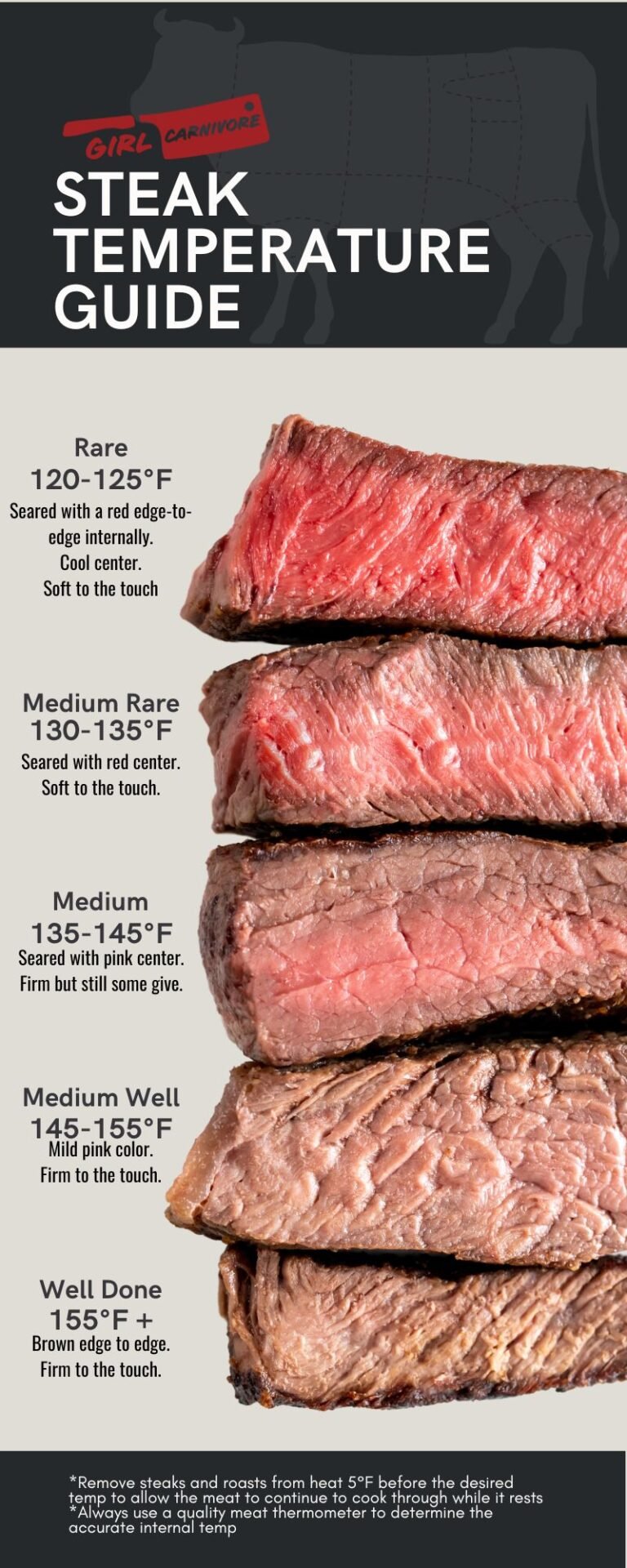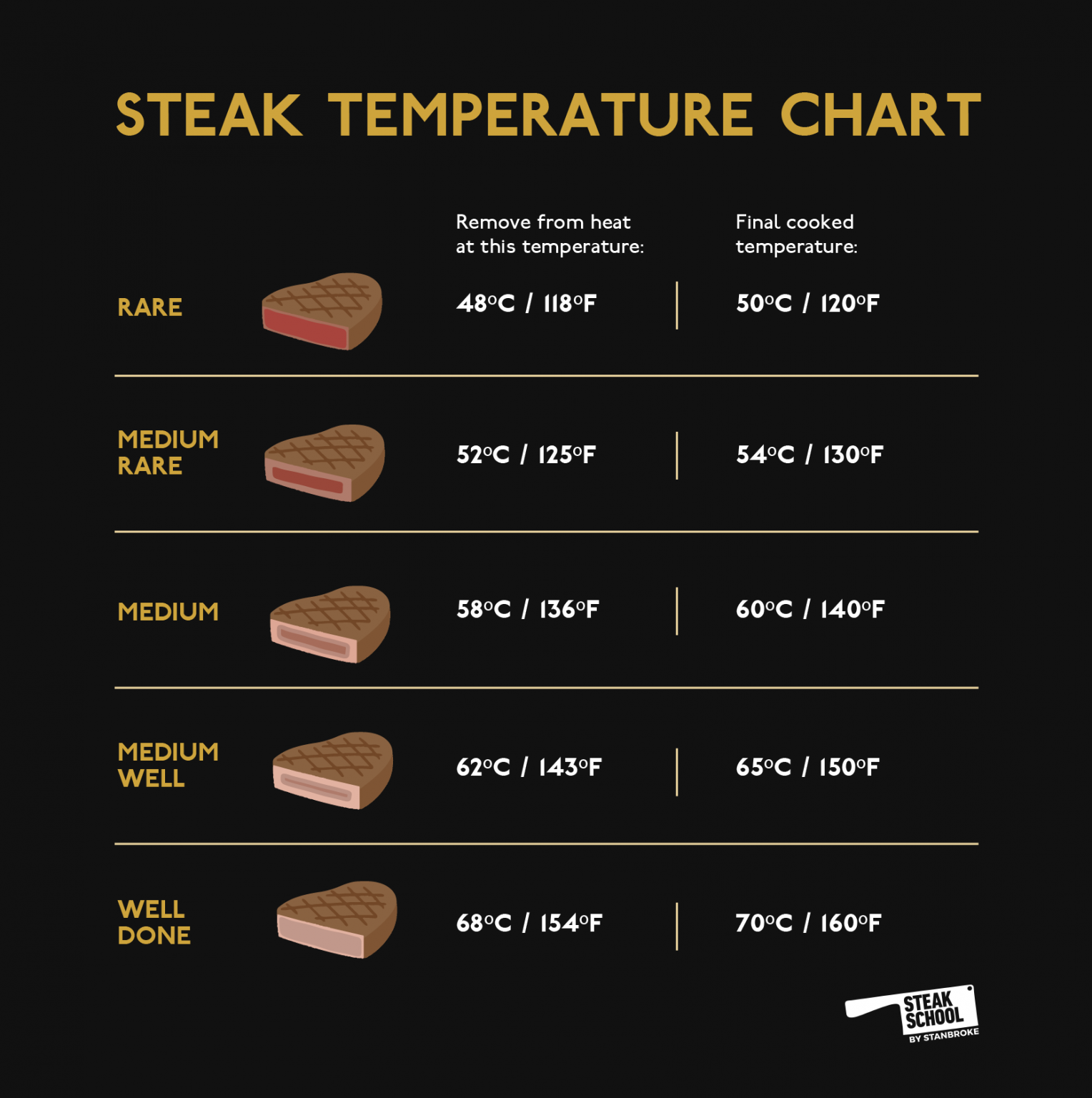Let’s cut straight to the chase—steak lovers, there’s nothing worse than ordering a juicy ribeye or cooking one at home, only to find out it’s overdone or undercooked. The secret? Nailing the internal.temp steak. That’s right, folks, the internal temperature of your steak is the key to unlocking flavor, tenderness, and a mouthwatering experience every single time.
Now, you might be thinking, “Why does internal temp matter? Can’t I just eyeball it?” Well, sure, you can try guessing, but unless you’re a professional chef with years of practice, chances are you’re gonna end up with something that’s either too chewy or too raw. Cooking steak is an art, but it’s also a science, and understanding the internal temp is where the magic happens.
So, whether you’re a steak enthusiast, a home cook trying to impress your friends, or someone who simply wants to avoid serving rubbery beef, this guide is for you. Let’s dive into the world of steak thermometers, temperature zones, and juicy secrets that’ll take your grilling game to the next level.
Read also:Sone 436 Unlocking The Mysteries Behind This Revolutionary Breakthrough
Here’s the deal: we’re gonna break this down step by step, covering everything from the basics of internal temp steak to advanced techniques that’ll make you feel like a pro. Ready? Let’s get cookin’!
Why Internal Temp Steak Matters
Alright, let’s get real here. The internal temp of your steak isn’t just some fancy chef term—it’s the difference between a perfectly cooked piece of meat and a disaster waiting to happen. When you cook steak, the temperature affects everything from texture to flavor. If it’s too low, you’re left with raw meat. Too high? You’ve got a hockey puck on your plate.
But here’s the kicker: different cuts of steak require different temps. A filet mignon, for example, needs a gentler touch compared to a ribeye. That’s why understanding the internal temp steak is so crucial. It’s not about guessing—it’s about precision.
So, what’s the deal with temps? Here’s a quick breakdown:
- Rare: 120°F to 130°F
- Medium Rare: 130°F to 135°F
- Medium: 140°F to 145°F
- Medium Well: 150°F to 155°F
- Well Done: 160°F and above
See how each range has its own magic? That’s why knowing your temps is so important. You don’t want to mess up your steak, do you?
The Science Behind Internal Temp Steak
Let’s get a little nerdy for a sec. When you cook steak, the proteins inside the meat start to change. As the temperature rises, these proteins contract, pushing out moisture and making the meat firmer. This is why overcooked steak feels dry—it’s lost all its juices. On the flip side, undercooked steak might still have too much water, making it less flavorful.
Read also:Why Vega Movies Kdrama Is A Mustwatch For Every Drama Enthusiast
How Temperature Affects Flavor
Flavor is everything when it comes to steak. The Maillard reaction—a fancy term for browning—is what gives steak that rich, caramelized taste we all love. But this reaction only happens at certain temperatures. If your internal temp steak is too low, you won’t get that delicious crust. Too high? You’re burning the outside while leaving the inside raw.
So, yeah, temperature matters. A lot.
Tools You Need for Accurate Internal Temp Steak
Now, you might be wondering, “How do I even check the internal temp of my steak?” Good question. Here’s what you need:
- Instant-read thermometer: This is your best friend in the kitchen. It gives you accurate readings in seconds.
- Thermocouple: If you’re feeling fancy, invest in a thermocouple. It’s super precise and great for serious steak enthusiasts.
- Your fingers: Yep, you read that right. Chefs often use the “touch test” to gauge doneness, but it takes practice.
Don’t worry if you’re new to this—you’ll get the hang of it with time. For now, just stick to the thermometer. It’s foolproof and reliable.
How to Use a Meat Thermometer
Using a meat thermometer is easier than you think. Here’s how:
- Insert the probe into the thickest part of the steak, avoiding any bones or fat.
- Wait for the reading to stabilize. Most thermometers give you a result in a few seconds.
- Compare the temp to your desired doneness level (see the chart above).
Simple, right? No more guessing games. Just pure, delicious steak.
Common Mistakes When Checking Internal Temp Steak
Even the best cooks make mistakes sometimes. Here are a few to watch out for:
- Not letting the steak rest: After cooking, let it sit for a few minutes. This allows the juices to redistribute, ensuring a juicier bite.
- Overcooking: Trust your thermometer! Don’t leave the steak on the grill or in the pan longer than necessary.
- Not calibrating your thermometer: Thermometers can drift over time. Make sure yours is accurate by testing it in ice water (it should read 32°F).
Avoid these pitfalls, and you’ll be golden every time.
Advanced Techniques for Perfect Internal Temp Steak
Ready to take your steak game to the next level? Here are a few pro tips:
Reverse Searing
This technique involves cooking the steak slowly at a low temperature first, then searing it at the end. It results in an evenly cooked steak with a beautiful crust. Genius, right?
Sous Vide
Sous vide is all about precision. By cooking the steak in a water bath at a controlled temperature, you ensure it reaches the perfect internal temp every time. Plus, it’s almost impossible to overcook!
Both of these methods require a bit more equipment, but they’re worth it if you’re serious about steak.
Internal Temp Steak for Different Cuts
Not all steaks are created equal. Different cuts require different temps. Here’s a quick guide:
- Filet Mignon: Cook to medium-rare (130°F to 135°F) for tenderness.
- Ribeye: Go for medium (140°F to 145°F) to balance fat and flavor.
- Sirloin: Medium-well (150°F to 155°F) works best for this lean cut.
Remember, it’s all about finding the sweet spot for each cut.
Resting Your Steak After Cooking
Let’s talk about resting. This is one of the most important steps in cooking steak, and yet so many people skip it. When you rest the steak, the juices have time to redistribute, resulting in a juicier bite. Trust me, it makes a huge difference.
Here’s how long to rest your steak:
- Thin cuts: 5 minutes
- Thick cuts: 10 minutes
Resist the urge to cut into it right away. Your taste buds will thank you.
FAQs About Internal Temp Steak
Got questions? We’ve got answers. Here are some common queries about internal temp steak:
Q: Can I use the touch test instead of a thermometer?
A: Sure, but it takes practice. If you’re new to cooking steak, stick to the thermometer until you’re confident in your skills.
Q: What happens if I overcook my steak?
A: Overcooked steak becomes tough and dry. Stick to the recommended temps to avoid this.
Q: Can I cook steak to well-done and still have it juicy?
A: It’s tough, but possible. Use a cut with more fat, like ribeye, and don’t skip the resting step.
Conclusion: Nailing the Internal Temp Steak
There you have it, folks. The secret to perfectly cooked steak lies in mastering the internal temp. Whether you’re using a thermometer, sous vide, or reverse searing, understanding the science behind cooking temps will elevate your steak game to new heights.
So, what are you waiting for? Grab your thermometer, fire up the grill, and get cooking. And don’t forget to share your creations with us in the comments below. Happy grilling!
Oh, and one last thing: if you found this guide helpful, why not check out our other articles on cooking tips and tricks? There’s always more to learn, and we’re here to help you every step of the way.
Table of Contents
Why Internal Temp Steak Matters
The Science Behind Internal Temp Steak
Tools You Need for Accurate Internal Temp Steak
Common Mistakes When Checking Internal Temp Steak
Advanced Techniques for Perfect Internal Temp Steak
Internal Temp Steak for Different Cuts
Resting Your Steak After Cooking



